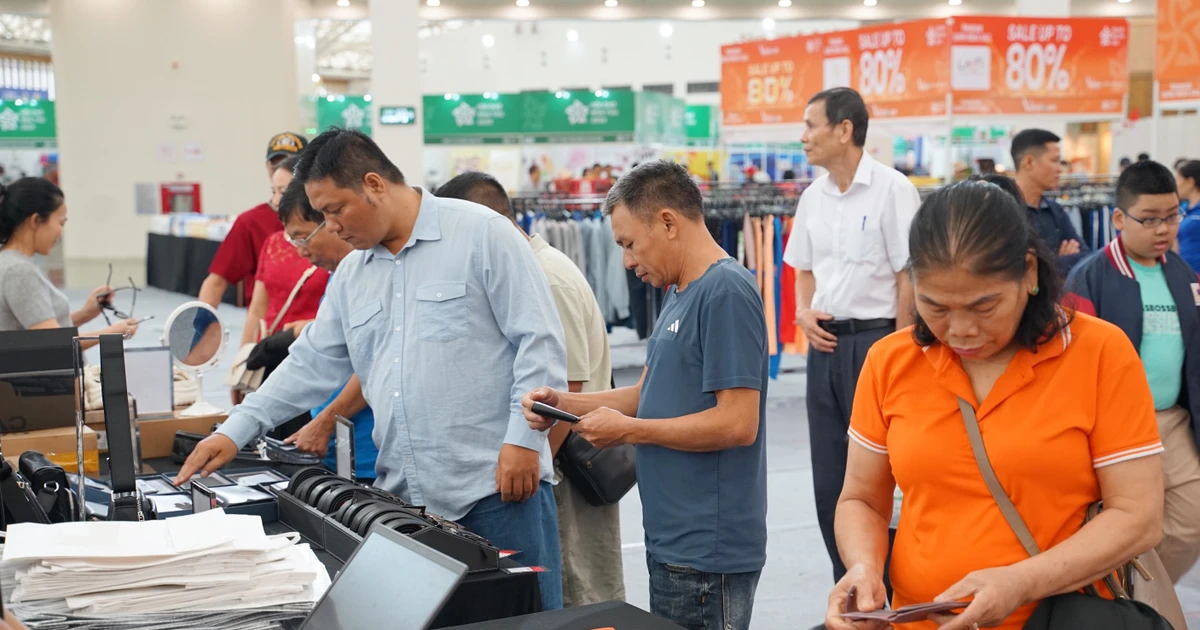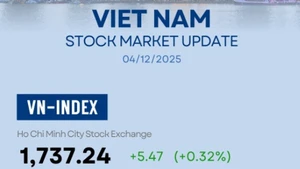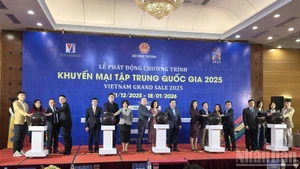E-commerce – bright spot in the digital economy
In the final week of September 2025, both the global and Vietnamese e-commerce landscapes witnessed a series of notable developments. Globally, OpenAI officially launched GPTPro, ushering in a new era with the “Buy Direct in Chat” feature, which allows users to make purchases directly within conversations. This is regarded as the beginning of “AI Commerce”—a new stage where artificial intelligence not only provides consultation but also facilitates transactions, competing head-on with TikTok Shop, Amazon, and Meta (Facebook).
Meanwhile, TikTok Shop is testing a hybrid model that combines short videos and livestreams in Japan, the world’s fourth-largest e-commerce market. Success in Japan is expected to pave the way for the platform’s deeper penetration into other developed markets.
In China, major players such as Meituan, Pinduoduo, and JD.com are driving the growth of instant commerce (quick commerce), which promises delivery of essential goods within just 30 minutes. This trend has begun spreading to Southeast Asia and is forecast to arrive in Viet Nam soon.
Domestically, the Ministry of Industry and Trade has issued Official Document No. 7291/BCT-KHTC to the Ministry of Finance, implementing Government Resolutions No. 230/NQ-CP (August 10, 2025) and No. 226/NQ-CP (August 5, 2025) on the growth targets of sectors, industries, and localities.
Accordingly, the Ministry has raised its forecast for B2C e-commerce growth in 2025 to 25.5%, with total transaction value expected to reach 26–28 billion USD, aiming for 50 billion USD by 2030. This surge is driven mainly by platforms such as Shopee, TikTok Shop, and Lazada, fueled by the growing popularity of video-based shopping, whether through livestreams or video commerce.

However, the market is also facing major challenges. The draft Law on E-commerce introduces new regulations requiring sellers to verify their identities using VNeID, while tightening platform responsibilities in monitoring counterfeit goods and addressing long-standing violations.
According to data from Metric, in the first half of 2025, around 80,000 online stores exited e-commerce platforms due to soaring traffic costs, mounting competition from KOCs (Key Opinion Consumers), and stricter tax policies. At the same time, the Ministry of Finance has proposed removing tax exemptions for orders valued below 1 million VND, aiming to create a more level playing field between imported and domestically produced goods.
Against this backdrop, on June 3, 2025, the Minister of Industry and Trade issued Decision No. 1568/QD-BCT, approving the National Master Plan for E-commerce Development for the 2026–2030 period. A key component of this plan is promoting cross-border e-commerce as a national strategy during 2026–2030, by developing logistics infrastructure such as logistics hubs, bonded warehouses, and order fulfillment centres—with the goal of positioning Viet Nam similarly to India’s role in digital service exports.

Diversifying export markets in e-commerce is considered a critical factor - not only focusing on traditional partners like the US or China, but also expanding to ASEAN, the Middle East, Africa, and Latin America.
Viet Nam’s e-commerce sector is not only experiencing rapid growth but also witnessing intensifying competition among major platforms such as Shopee, TikTok Shop, Facebook, and YouTube.
Shopee continues to boost consumer engagement through initiatives such as partnerships with Napas, launching the Hanoi Digital Storefront, and testing YouTube voucher programmes. TikTok Shop, which now holds nearly 39% market share, is closing the gap with Shopee while introducing the ACE Framework to optimise seller performance.
Meanwhile, Facebook has entered the race by testing affiliate links that allow content creators to sell Shopee products, and YouTube has partnered with Shopee to roll out YouTube Shopping across Southeast Asia and Viet Nam, intensifying direct competition with TikTok Shop.
Building a robust e-commerce ecosystem

Amid the strong growth of Viet Nam’s e-commerce sector, accompanied by challenges related to cost, management, and competition, finding a sustainable development path has become an urgent priority, especially as the available workforce remains limited in capacity.
In response, the Centre for E-commerce and Digital Technology Development (eComDX) under the Department of E-commerce and Digital Economy (the Ministry of Industry and Trade), has developed and launched the “4 Go” solution package — comprising GoRight, GoOnline, GoExport, and GoAI — along with a series of digital transformation initiatives designed to support businesses and entrepreneurs nationwide.
This initiative is regarded as a key enabler for Viet Nam’s e-commerce industry in general, and for businesses and small traders in particular, to build a high-quality workforce and effectively adopt appropriate digital solutions that drive sustainable growth and enhance adaptability to emerging global trends.
Specifically, GoRight focuses on disseminating and updating the legal framework, standardising operational processes, and helping both businesses and regulatory bodies comply with e-commerce laws - ensuring lawful operations and minimising risks.
Meanwhile, GoOnline assists businesses in building a strong digital presence, improving online sales and livestreaming skills, and leveraging digital tools effectively for product promotion.
GoExport equips enterprises with the knowledge, tools, and capabilities to engage in cross-border e-commerce professionally, helping them access global platforms such as Amazon, Alibaba, and JD.com.
GoAI applies artificial intelligence to data analytics, process optimisation, and customer experience enhancement. It also promotes the integration of AI agents to develop virtual assistants and self-service chatbots, strengthening competitiveness in the digital era.
According to Nguyen Huu Tuan, Director of eComDX, the synchronised implementation of programs such as GoOnline, GoAI, GoExport, and GoRight will not only help enterprises overcome existing challenges but also build a resilient e-commerce ecosystem, reinforcing Viet Nam’s pioneering position in the global digital economy.
It can be said that, as Viet Nam’s e-commerce market enters a boom phase driven by emerging trends — from AI Commerce and Livestream/Video Commerce to cross-border e-commerce—the coordinated deployment of the “4 Go” solutions plays a foundational role. It enhances human resource capacity, accelerates digital transformation, and empowers businesses, localities, and regulatory bodies not only to adapt but also to grow sustainably, contributing to Viet Nam’s advancement on the regional and global digital economy map.
















